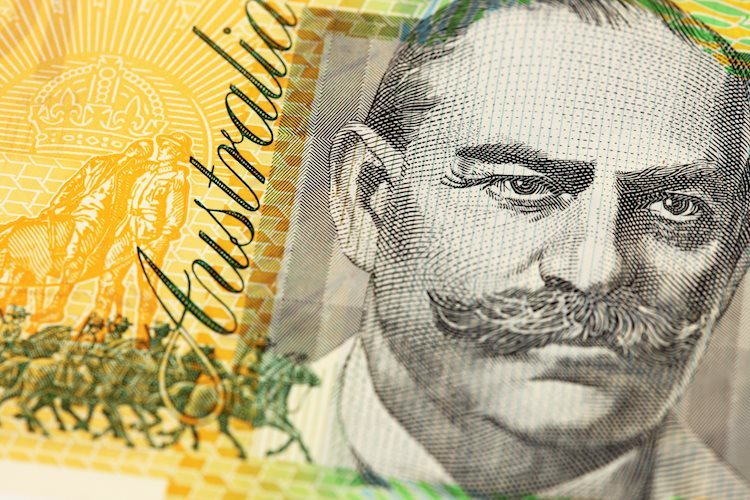- AUD/USD rebounds to near 0.6500 but the outlook remains bearish.
- Trump’s economic agenda is expected to boost US inflation and economic growth.
- A fresh escalation in the Russia-Ukraine war has dampened the risk-appetite of investors.
The AUD/USD pair recovers more than half of its intraday losses and rebounds to near the psychological figure of 0.6500 in Friday’s European session. The Aussie pair bounces back as the US Dollar (USD) surrenders a majority of its intraday gains after refreshing two-year high. The US Dollar Index (DXY), which tracks the Greenback’s value against six major currencies, gives up gains after facing selling pressure near 108.00 but still holds higher.
The bullish trend in the US Dollar remains intact as investors expect the current policy-easing cycle of the Federal Reserve (Fed) will be shallower than what market participants had anticipated earlier. Market experts believe that price pressures and economic growth in the United States (US) economy could accelerate when President-elect Donald Trump will take the office. Trump mentioned, in his election campaign, that he will raise import tariffs and lower taxes.
In Friday’s session, investors will focus on the flash S&P Global Purchasing Managers’ Index (PMI) data for November, which will be published at 14:45 GMT. The report is expected to show that the overall business activity expanded at a faster pace. Investors will also pay close attention to how businesses are reacting to rate cuts and Trump’s victory.
Meanwhile, a fresh escalation in Russia-Ukraine war has also improved the US Dollar’s appeal as safe-haven. Russia launched intercontinental ballistic missiles on Ukraine in response to their attack over the week by the United Kingdom (UK) and the US-supplied missiles. This has dampened market sentiment significantly.
In the Australian region, flash JUDO Bank Composite PMI surprisingly contracted in November. The index showing overall private business activity declined to 49.4 from 50.2 in October due to weakness in the services sector. A figure below the 50.0 threshold is considered as contraction in economic activities.
Australian Dollar FAQs
One of the most significant factors for the Australian Dollar (AUD) is the level of interest rates set by the Reserve Bank of Australia (RBA). Because Australia is a resource-rich country another key driver is the price of its biggest export, Iron Ore. The health of the Chinese economy, its largest trading partner, is a factor, as well as inflation in Australia, its growth rate and Trade Balance. Market sentiment – whether investors are taking on more risky assets (risk-on) or seeking safe-havens (risk-off) – is also a factor, with risk-on positive for AUD.
The Reserve Bank of Australia (RBA) influences the Australian Dollar (AUD) by setting the level of interest rates that Australian banks can lend to each other. This influences the level of interest rates in the economy as a whole. The main goal of the RBA is to maintain a stable inflation rate of 2-3% by adjusting interest rates up or down. Relatively high interest rates compared to other major central banks support the AUD, and the opposite for relatively low. The RBA can also use quantitative easing and tightening to influence credit conditions, with the former AUD-negative and the latter AUD-positive.
China is Australia’s largest trading partner so the health of the Chinese economy is a major influence on the value of the Australian Dollar (AUD). When the Chinese economy is doing well it purchases more raw materials, goods and services from Australia, lifting demand for the AUD, and pushing up its value. The opposite is the case when the Chinese economy is not growing as fast as expected. Positive or negative surprises in Chinese growth data, therefore, often have a direct impact on the Australian Dollar and its pairs.
Iron Ore is Australia’s largest export, accounting for $118 billion a year according to data from 2021, with China as its primary destination. The price of Iron Ore, therefore, can be a driver of the Australian Dollar. Generally, if the price of Iron Ore rises, AUD also goes up, as aggregate demand for the currency increases. The opposite is the case if the price of Iron Ore falls. Higher Iron Ore prices also tend to result in a greater likelihood of a positive Trade Balance for Australia, which is also positive of the AUD.
The Trade Balance, which is the difference between what a country earns from its exports versus what it pays for its imports, is another factor that can influence the value of the Australian Dollar. If Australia produces highly sought after exports, then its currency will gain in value purely from the surplus demand created from foreign buyers seeking to purchase its exports versus what it spends to purchase imports. Therefore, a positive net Trade Balance strengthens the AUD, with the opposite effect if the Trade Balance is negative.
Read the full article here

